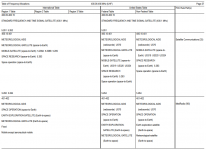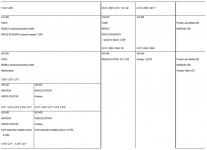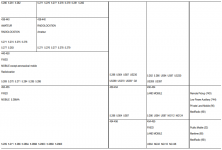According to the submittals the use would be for secondary/back-up tracking, and telecommand (TT&C) operations in the band during launch and should the primary links become inoperable. And like what was previously mentioned, amateur radio is a secondary user in this band, so I expect this to be quite a dialog. Overall, this was a very interesting read.
Normally, AST SpaceMobile will utilize the satellites’ feederlink frequencies in the Q-/V bands (around 50 GHz and 40 GHz) for its nominal TT&C functions, however, during Launch and Early Orbit Phase (“LEOP”) operations, as well as when required during emergency situations, the satellites will use either UHF 400 MHz or S-band (2 GHz) Space Operations service bands. This capability is essential in cases where satellites cannot be controlled through the high-gain Q-/V-band satellite antennas.
AST's application.
https://www.fcc.gov/ecfs/document/106201991509823/1
TT&C beacons: As noted in the Orbital Debris Assessment Report (“ODAR”), immediately following release from the launch vehicle, the proposed satellites will broadcast a beacon signal allowing for identification and tracking of the spacecraft.3 Specifically, each proposed satellite temporarily will transmit telemetry/tracking beacon signals to authorized non-U.S. earth stations on UHF-band frequencies at 430-440 MHz and S-band frequencies at 2200-2290 MHz under the following limited circumstances: (i) during the satellite’s launch and early-orbit phase operations; and (ii) in an unlikely event of an emergency after the satellite has reached its operational altitude. Under either of those circumstances and subject to coordination with federal government and other authorized operations in the relevant frequency band, the satellite temporarily will transmit, on average: (i) a UHF-band beacon signal, with a maximum bandwidth of 50 kHz, every 8 seconds; and (ii) three S-band beacon signals, with a maximum bandwidth of 0.5 MHz, every 10 seconds. These UHF- and S-band beacons will operate with right- and left-hand circular polarizations, as well as peak antenna gains of 0.0 dBi and 6.0 dBi, respectively, in compliance with the Commission’s requirements for attenuating mean power of emissions and out-of-band emissions.4 Additionally, these beacons will shut off within 24 hours after launch of the satellite or commencement of beacon transmissions during an emergency.

 amsat-uk.org
amsat-uk.org





